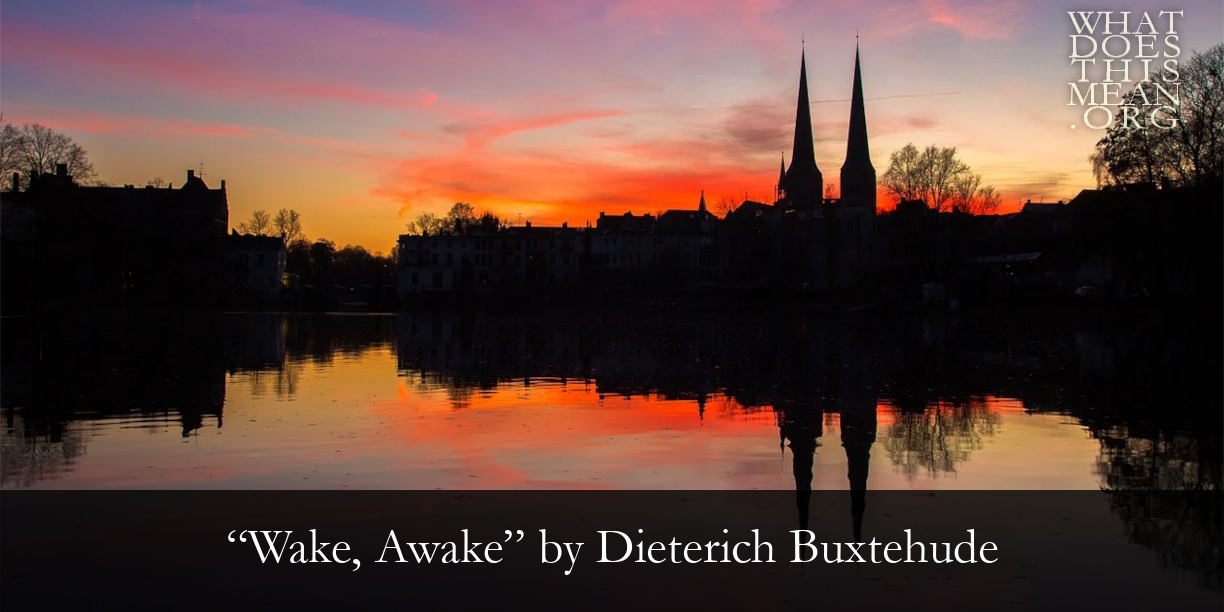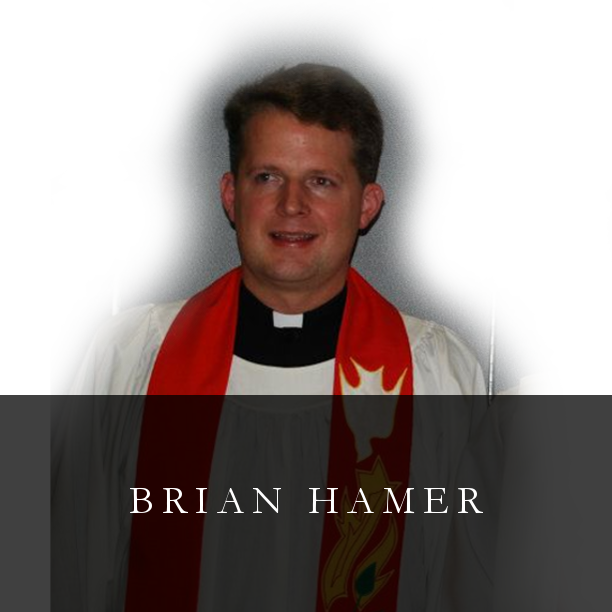There His eyes are pure fiery beams of love and fiery darts of love, or flames of the sweetest and most unspeakable kindness, with which He comfortingly wounds, comfortingly fills, and comfortingly turns to Himself the glorified eyes of His dear brothers and sisters. And in turn they behold Him in such a way that their eyes, heart, mind, and sense and all their members burn with chaste, fervent, fiery, unfeigned love for Christ and desire nothing in heaven or on earth more dearly than Him. (Joy, p. 42)
I invite you, as always, to clear away all distractions, use your best sound equipment, and of course to grab a cup of coffee for this “Cantatas Over Coffee” series. Notice how the voices “dance” with the music, offering a joyfulness, buoyancy and a sense of urgency as the watchmen of Zion summon the Bride to repentance and faith as she waits for her Bridegroom, “ever in sweet rejoicing.”
| Stanza 1 (0:00–4:38) Wachet auf, ruft uns die Stimme Der Wächter sehr hoch auf der Zinne, Wach auf, du Stadt Jerusalem! Mitternacht heißt diese Stunde; Sie rufen uns mit hellem Munde: Wo seid ihr klugen Jungfrauen? Wohl auf, der Bräutgam kömmt; Steht auf, die Lampen nehmt! Alleluja! Macht euch bereit Zu der Hochzeit, Ihr müsset ihm entgegen gehn! Stanza 2 (4:39–7:53) Zion hört die Wächter singen, Das Herz tut ihr vor Freuden springen, Sie wachet und steht eilend auf. Ihr Freund kommt vom Himmel prächtig, Von Gnaden stark, von Wahrheit mächtig, Ihr Licht wird hell, ihr Stern geht auf. Nun komm, du werte Kron, Herr Jesu, Gottes Sohn! Hosianna! Wir folgen all Zum Freudensaal Und halten mit das Abendmahl. Stanza 3 (7:54–11:12) Gloria sei dir gesungen Mit Menschen- und englischen Zungen, Mit Harfen und mit Zimbeln schon. Von zwölf Perlen sind die Pforten, An deiner Stadt sind wir Konsorten Der Engel hoch um deinen Thron. Kein Aug hat je gespürt, Kein Ohr hat je gehört Solche Freude. Des sind wir froh, Io, io! Ewig in dulci jubilo. | Wake up, the voice calls us the watchmen loudly upon the pinnacles, wake up, you city of Jerusalem! This hour is called midnight; they call us with a clear voice: where are you, wise virgins? Up, the Bridegroom comes; Look up, take the lamps! Alleluia! Make yourselves ready for the wedding feast, you must go to meet him! Zion hears the watchmen sing, her heart leaps for joy, she awakes and stands up in haste. Her Friend comes from heaven in his splendor, In grace mighty, with truth powerful. Her light becomes bright, her star rises. Now come, O precious Crown, Lord Jesus, God's son! Hosanna! We all follow to the hall of joy and join in keeping the supper. Glory be sung to you with the tongues of men and angels, with harps and cymbals fair! Of twelve pearls are your gates, in your city we are companions of the angels high around your throne. No eye has ever perceived, no ear has ever heard such gladness. Therefore we are joyful, Io, io! Ever in sweet rejoicing. |
In this context, the last and first Sundays of the church year are especially fitting for this chorale and for the Evening Music series because all of them deal with the end times. Going to bed in the evening (“Midnight hears the welcome voices” [Lutheran Service Book 516.1]) and getting up in the morning is the Christian’s daily rehearsal for his own death and resurrection. Similarly, the last Sunday in the church year pictures Jesus’ final coming as our Groom who comes at midnight (St. Matthew 25:6). Advent II (St. Luke 21:25–36) presents Jesus as our Alpha and our Omega, the first and last, the beginning and the end. Advent III (St. Matthew 11:2–10) and IV (St. John 1:19–28) bid you, His own Bride, to respond to the preaching of John the Baptist in penitent faith and prepare the royal highway for the One who comes to you in the manger, in the means of grace, and at the end of time. So even if the Lord should call you home this very night, you can pray with Nicolai:
Come, then, dearest Lord, and delay no more!
Come, Lord Jesus Christ, come and fetch us home in peace.
Come and lead the captives out of captivity,
that we may rejoice with perfect hearts.
Come, Lord, our Savior, come, highly desired of all nations,
and let Your face shine, and we shall recover.
Come, my Light and my Deliverer, and bring my soul out of prison,
that I may glorify Your holy name. (Joy, p. 112)
+ E’en so, Lord Jesus, quickly come! +



 RSS Feed
RSS Feed
